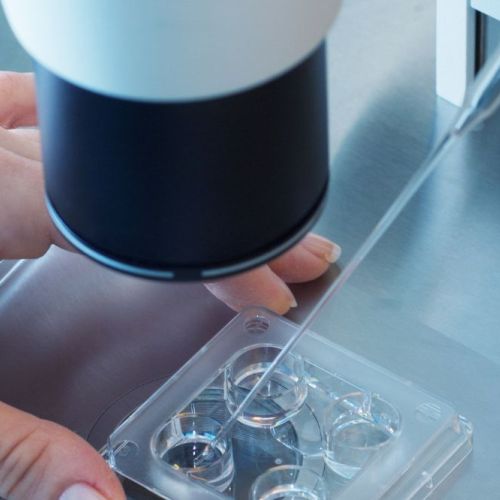What Are Tubal Ligation Reversal Side Effects?

A tubal ligation reversal is a procedure that may allow you to get pregnant even though you had your tubes tied. In a tubal ligation reversal procedure, your doctor reconnects or reopens your fallopian tubes which can make it possible for an egg and sperm to unite. A common question from women who are interested in this procedure is, “What are tubal ligation reversal side effects?”
Possible Side Effects of a Tubal Ligation Reversal
When you have a tubal reversal done by the expert physicians at The Center for Reproductive Health, the risk of complications or side effects is low. You’re sedated during the procedure and won’t feel any discomfort. You may feel groggy or sleepy for several hours after the procedure, and you’ll need someone to drive you home.
You may have some tenderness and pain the first few days after the procedure, and you may be given a prescription pain reliever to help you be as comfortable as possible as your body heals. Most people can resume normal activities within about a week. Your doctor will give you detailed post-op instructions regarding how long you may need to avoid sex or lifting anything heavy. It’s important to attend your follow-up appointment about a week after surgery to make sure you’re healing as expected.
Is There a Risk of Complications?
Complications of this procedure are rare, but since it’s a surgical procedure, there’s some risk of problems such as an allergic reaction to anesthesia, infection, or bleeding. There’s a very small chance of damage to other organs during surgery. When you have a tubal reversal, there is a slightly increased risk of having an ectopic pregnancy, which means a fertilized egg could implant outside your uterus.
The most common location of an ectopic pregnancy is the fallopian tubes. An egg that doesn’t implant in the uterus can’t grow to term. If the fallopian tube ruptures, you may experience severe pain and bleeding, which is a medical emergency.
Trying to Get Pregnant
After you’ve healed, your doctor will let you know how soon it’s safe to try to get pregnant. Around 50 to 80 percent of women under 35 can conceive within a year of a tubal ligation reversal. If you’re over 40 or if you have had other problems such as pelvic inflammatory disease, endometriosis, or scar tissue from previous pelvic surgery, the chances of successfully conceiving a child may be lower.
Alternatives to Tubal Ligation Reversal
Talk to the fertility experts at The Center for Reproductive Health if you have other questions about what to expect from a tubal ligation reversal. Our team can also explain other alternatives that may make it possible to have a baby even if you’re not sure you want to go through tubal ligation reversal. In vitro fertilization (IVF) is an option in which your eggs are combined with your partner’s sperm in a lab, which wouldn’t require reconnecting your fallopian tubes.
Schedule a consultation at The Center for Reproductive Health today for more information on the best options for you.



